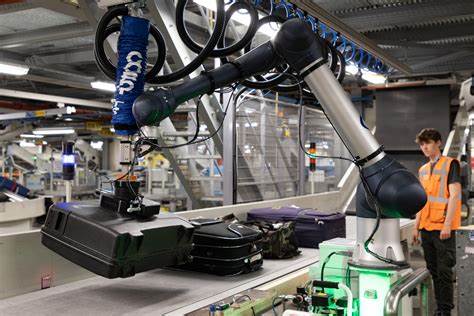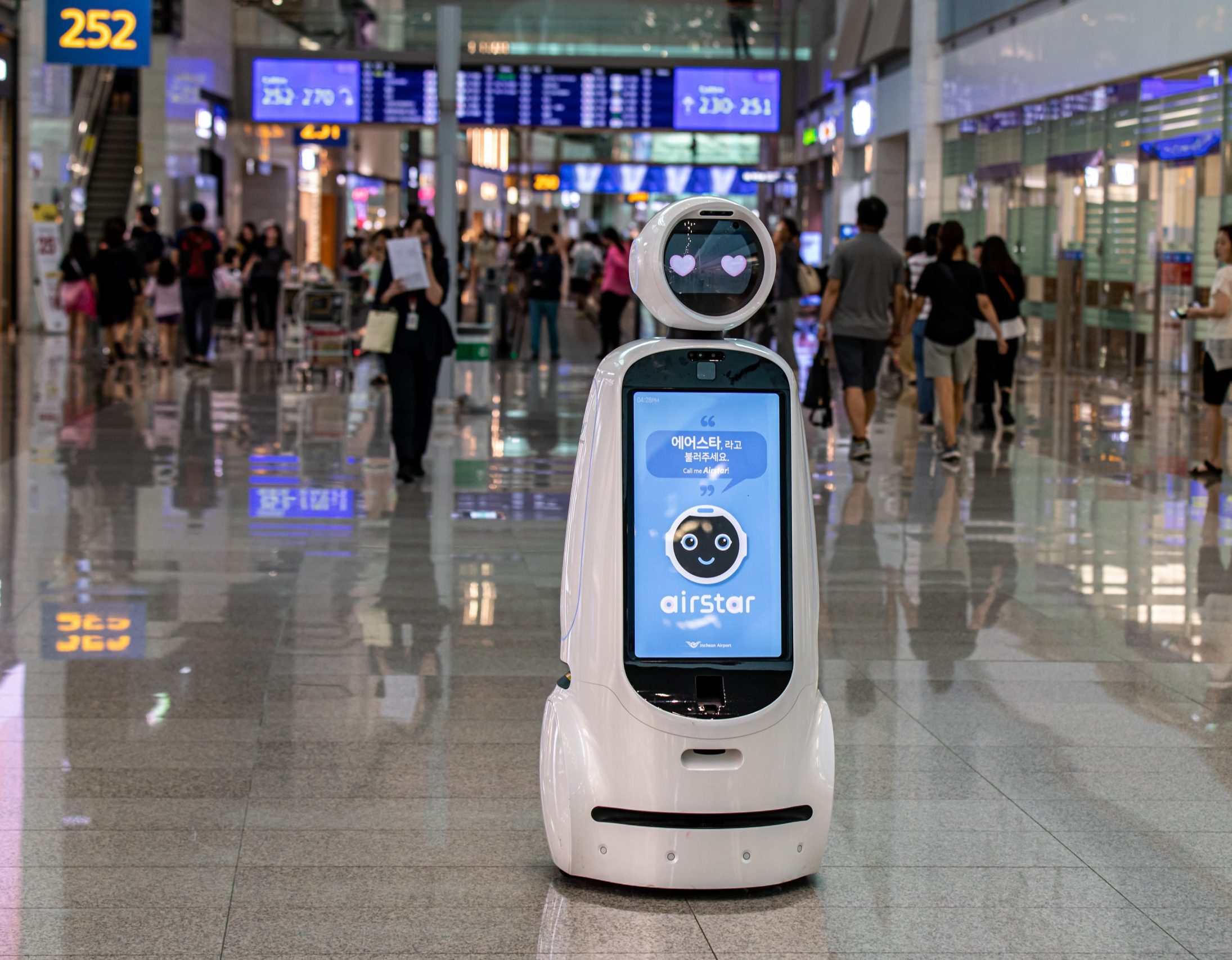Manuel van Lijf
Director nlmtd
Manuel is Director of the Travel & Transportation practice at nlmtd. He has over 25 years of experience, primarily in the international aviation sector. At KLM and Dubai Airports, he held positions such as Director of Innovation, Head of Product Design, and Global Head of Digital Marketing. Currently at nlmtd, he collaborates with clients like Schiphol Airport, IAG Group, Miami Airport, and Copenhagen Airport, assisting these organizations in making their operating models more sustainable through innovation.
Share this article
Labor shortages and mobility challenges are straining the travel and transport sector. Technology provides a solution. In this article, Manuel demonstrates how AI, autonomous vehicles, robotics, and digital twins are transforming work and ensuring its future viability.
The travel and transportation sector is confronting two significant challenges: ongoing labor shortages and a rising demand for mobility. To tackle these issues, organizations are adopting innovative technologies that enhance operational efficiency and transform the nature of work in the industry. This shift is evident across various segments, including aviation, railroads, ports, and hospitality. Four key technologies play a crucial role in this transformation.
1. AI and Data Analysis: Smarter Decisions and Better Planning
Artificial intelligence (AI) and data analysis are essential components of digital transformation. By automating cognitive tasks and enhancing decision-making, AI facilitates more efficient operations. A prime example is predictive maintenance, where AI analyzes sensor data from aircraft, railways, or port cranes to identify malfunctions early. This approach can boost productivity by 25% and reduce disruptions by 70%. For instance, ProRail utilizes “digital twins” and AI to optimize maintenance planning and improve personnel deployment.
Personnel planning also benefits from the use of AI. KLM utilizes AI in baggage handling to optimize schedules by considering various factors, including delays and absenteeism. Additionally, the BlueBot chatbot helps improve customer interactions; thanks to AI, KLM now processes twice the number of customer inquiries with the same team, with 50% of all customer contacts being AI-supported. Moreover, AI plays a role in safety and quality control, including automated threat detection at airports and cargo inspection at ports.
2. Autonomous Vehicles: Less Staff, More Continuity
Autonomous vehicles reduce the need for staff while simultaneously enhancing the safety and reliability of transportation processes. At Schiphol Airport, a trial with self-driving baggage tractors, such as Aurrigo’s Auto-DollyTug, is underway. These vehicles autonomously transport baggage between aircraft and terminals, providing a valuable solution during peak hours. Similarly, at the Port of Rotterdam, Automated Guided Vehicles (AGVs) operate around the clock, transporting containers between ships and storage facilities. This operation significantly decreases the need for traditional staffing in these transport processes.
Efforts are underway to enhance passenger transport. Tests using Automated Train Operation (ATO) demonstrate that trains can operate with minimal human intervention. Additionally, drones are proving to be invaluable for inspections; with just three drones, the Port of Rotterdam can monitor an area of 42 kilometers, a task that previously required significantly more personnel.
3. Robotics and Automation: The New Physical Work
Increasingly, physical and repetitive tasks are being automated by robots and systems. In ports, unmanned cranes and automated guided vehicles (AGVs) enable faster container handling, requiring up to 70% fewer personnel than traditional terminals. The use of robotics is also expanding beyond ports. Airports are testing robotic arms for loading baggage, which reduces the physical strain on employees. In the hospitality sector, service robots, such as Plato from the United Robotics Group, are used to serve food and clear tables. In one case, this robot covered a distance of 1 km daily, allowing staff to dedicate more time to guest interactions.
These advancements are shifting human roles away from executing tasks to focusing on supervision and control from centralized command centers.

4. Digital Twins: Virtual Insights for Smarter Operations
Digital twins, virtual representations of physical objects or processes, enable real-time monitoring of operations and facilitate simulations. Schiphol Airport utilizes a Common Data Environment (CDE) that integrates data from over 80,000 assets. This integration allows for scenario calculations, such as those predicting equipment failures, which enhances the coordination of maintenance and deployment while reducing response times.
Similarly, the Port of Rotterdam is developing a digital twin that combines infrastructure data with information on weather and ship movements. This technology is expected to lead to autonomous shipping by 2030 and is already enhancing traffic management through reduced direct human intervention.
The New Role of Humans
As technology takes over routine tasks, new roles are emerging in data management, system supervision, and customer interaction. To adapt successfully, it is essential for employees to reskill and upskill. The use of technology should not be viewed as an end in itself; rather, it serves as a tool to enhance human capabilities, improve working conditions, and promote sustainability.
Organizations that successfully navigate this transition set themselves apart by having a clear technological vision, investing in their employees, and maintaining a human-centered approach. The future of work in the travel and transport sectors is already unfolding, with technology leading the way.





